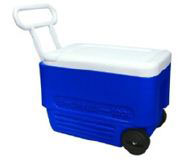Locally Grown Farm Fresh Foods are Delicious!
By: Kaye Kasza, Family and Consumer Science Agent, South East Area Extension

Now is the time to get ‘just picked’ fresh produce at a local farmers’ market. It’s a great way to get locally-grown, fresh fruit, vegetables, and other foods for you and your family while supporting local farmers. The tasty, high-quality Colorado produce is a highlight of summer. Most Americans should eat more than 3 cups of vegetables and fruits each day. There are many benefits of adding vegetables and fruits to your meals. Vegetables and fruits are low in fat and calories, while providing fiber and other key nutrients. They are full of antioxidants and phytonutrients that help ward off chronic disease. Vegetables and fruits don’t just add nutrition to meals. They can also add color, flavor, and texture.
As you try out the farmers’ markets in your area, remember that food safety guidelines need to be followed along the food chain from field to fork. The goal is to minimize contamination to lower the chance of foodborne illness. Vendors must comply with the markets food safety rules, as well as any applicable government regulations. Look for vendors with clean stands, clean utensils for food handling, covered garbage cans, and clean bags, and wash station for vendors to wash their hands and utensils. Vendors must also keep perishable foods like eggs, cheese, meat, cream pies and cut produce in a cooler with ice or cold packs. At the other end of the food chain, consumers need to follow basic food safety guidelines. It is important to keep the food safe to eat and protect your family’s health from the farmers’ market to your home.

- Try to make the farmer’s market the last stop on your way home.
- Bring a cooler with cold packs to keep perishable foods cool on the way home.
- Remember to keep raw meats and poultry separated from other foods. Buy these foods last. Bring sealable plastic bags to put the entire meat package into and put meats in the bottom of the cooler.
- Use separate totes for raw meat and poultry.
- Wash your totes often, using hot soapy water. Store them in a clean, dry location.
- Keep any hot foods, like roasted peppers, away from the cool foods.
- Make sure the vender is putting your roasted peppers or any other food in new, food grade plastic bags, not trash bags or reused bags.
- Always wash fresh fruits and vegetables with running water just before use. Scrub tough produce like melons and carrots with a clean firm brush under running water. Even produce that will be peeled before eating should be washed. This prevents surface pathogens being transferred to the parts you eat.
- Using soap or bleach to clean produce is not recommended.
- Store refrigerated produce in plastic bags with holes to let air circulate.
- Most fresh produce has a short shelf-life and should be used within a few days.
- If you plan to can or freeze your market produce, follow USDA recommendations and adjust for Colorado’s altitude. Check with your local CSU Extension Office for current USDA recommendations.
The CSU Farm to Table website at http://farmtotable.colostate.edu/ gives information on many fruits and vegetables. You will find information on nutrition, selection, preparation and food safety related to fresh produce.
Reference: Bunning, M., Yeh, S. (March 2010). Shopping at Colorado Farmers’ Markets. Colorado State University Extension, Fact Sheet No. 9.379.
Let’s Talk
Shopping at the farmer’s market is a great way to get your kids involved. Let them pick out a new vegetable to try. Then they can help prepare a meal or snack using the food they chose. Ask the vendor for handling and cooking suggestions. For a listing of local markets request a copy of the 2015 Colorado Farm Fresh Directory from your local CSU Extension Office, or go to the mobile app at www.coloradoagriculture.com If you are in another state, just go to that State’s Dept. of Agriculture website and you will find their farm fresh directory.
Recipe for Health:
Tomato Cucumber Salad

Ingredients:
- 4 scallions, chopped
- 2 cucumbers (about 3 cups), thinly sliced
- 2 tablespoons red wine vinegar
- 2 large tomatoes
- ¼ cup olive oil
- 2 tablespoons fresh basil, chopped
- ½ teaspoon coarse sea salt
- Fresh ground pepper to taste
Directions:
- Add scallions and cucumber to a large bowl and toss with vinegar.
- Cut tomatoes into thin wedges and add to bowl with cucumbers and scallions.
- Add olive oil, basil, salt, pepper and toss.
Serves 10
Serving Size: ½ cup
Suggestion: If you have leftover salad, use it the next day with the addition of your choice, mozzarella or feta cheese, olives, canned tuna, or cooked cubed chicken, etc.
http://www.liveeatplay.colostate.edu/eat/recipes/tomcuc.php#.VVOJdZO2Xis





